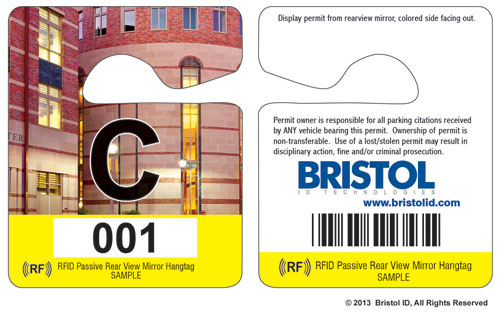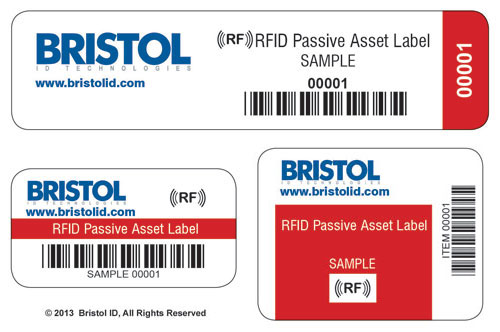May 07, 2013Bristol ID, a New York-based manufacturer of custom-printed plastic cards, ID badges, hangtags, signs and key fobs, is furthering its development of radio frequency identification technology offerings with a new dual-frequency RFID card or asset-tracking tag that accommodates two passive RFID chips able to transmit to a reader in the ultrahigh-frequency (UHF), high-frequency (HF) or low-frequency (LF) bands. The company is also offering new asset-tracking UHF tags that can be custom-designed, manufactured and shipped within approximately a week. The dual-frequency cards and tags are commercially available now, and are being tested by some of Bristol ID's existing customers. The company made its announcement at RFID Journal LIVE! 2013, held last week in Orlando, Fla.

Bristol ID has sold plastic printable cards and badges since 1975, with a focus on ID and security badges, as well as loyalty cards. The firm began offering badges with built-in RFID technology for access-control and tracking applications in 2009. Initially, says Keith Yeates, Bristol ID's CEO, the company's customers—systems integrators and resellers who provide the cards to end users—had begun requesting passive UHF RFID technology that would enable users to accomplish tasks (such as passing through a secure gate) as a way of indicating that they had arrived, without having to remove the badge from a pocket or wallet. The company also began embedding HF and LF RFID technologies into badges, when requested (as an alternative to UHF RFID inlays), thereby requiring a user to place a badge or ID card near a reader. The growth in the company's RFID business has been significant, Yeates reports. Currently, he says, about 20 percent of the firm's growth has been in relation to its RFID products, which have centered almost exclusively on cards that track individuals, not objects.
Leveraging its card-manufacturing capabilities, Bristol ID has now decided to release two new offerings—passive EPC Gen 2 UHF RFID tags in custom form factors for tracking assets and other items, as well as a dual-frequency card that can talk to readers in two different frequencies when interrogated.
The dual-frequency passive RFID cards are available in three combinations: HF-UHF, HF-LF and UHF-LF. The HF inlay is compliant with the ISO 14443 standard (which can also be used for Near Field Communication [NFC] applications), while the UHF inlay complies with the EPC Gen 2 standard and the LF inlay operates at 125 or 134 kHz compliant with proprietary air-interface protocols for access control. The most common use case to date, according to Yeates, has been the ID badge or access-control card that a business' employees may carry in order to enter a building or access a specific area of a facility. Often, he says, these badges already have existing passive LF or HF chips. The company typically intends to add a UHF gate somewhere at its facility, and hopes to spare staff members from having to carry two badges, which would also be more expensive than the single dual-frequency card.
Integrating two RFID inlays in the card or badge, Yeates says, compromises the read range. However, he notes, transmission read ranges vary according to the model of reader used, and can be about 10 feet for a UHF transmission in a dual-frequency tag, and a few centimeters for HF.
Bristol ID also provides custom RFID ID badges, hangtags or cards in form factors that may be, for example, shaped like a college mascot. The hangtag, with an embedded passive EPC Gen 2 UHF inlay, could then be attached to a car's rearview mirror, or be placed on a driver's dashboard to allow entrance into a parking area.
Bristol ID's customers typically utilize a desktop card printer to create ID cards and badges. The firm can also incorporate its tag in a clamshell consisting of protective exterior layers, if so requested. Another option is RFID-based cards or tags with additional printed technology, such as holograms or foil stamps. Yeates says that his company, which manufactures the RFID cards and tags itself, can design and make products based on customer orders within less than nine days.
With its new dual-frequency and asset-tracking offerings, Yeates says, Bristol ID is targeting the education, government, health-care, transportation and security markets. The company works not only with resellers and systems integrators, but also with original equipment manufacturers (OEMs), to provide customizable identification solutions.
Yeates declines to name any of the company's customers, but indicates that its RFID-based technology is currently in use worldwide by a variety of industries and for a number of applications, including concert tickets and ski passes. Bristol ID works with many RFID inlay vendors for its RFID-based products, he notes, depending on the particular use case and tag form factor.



